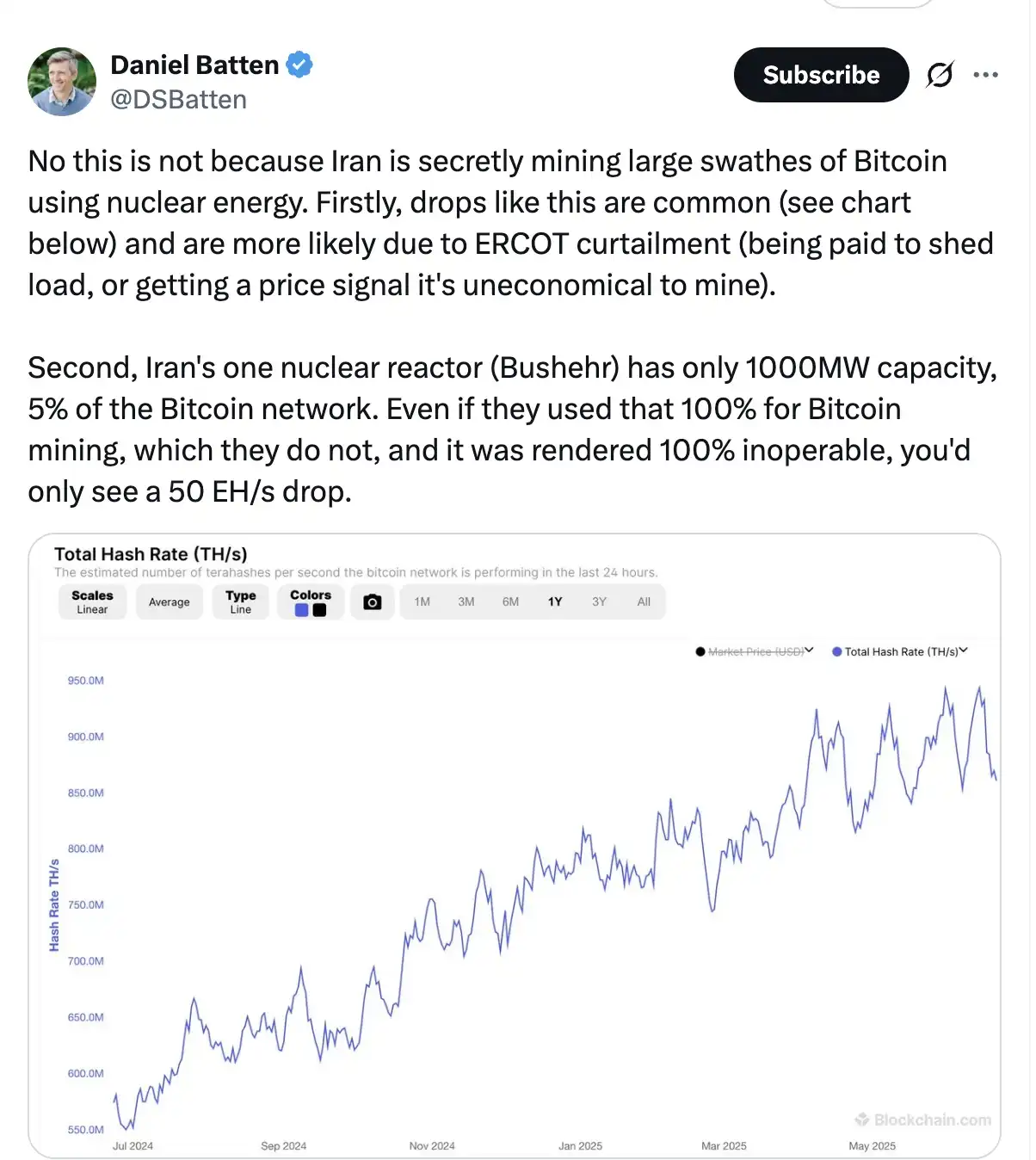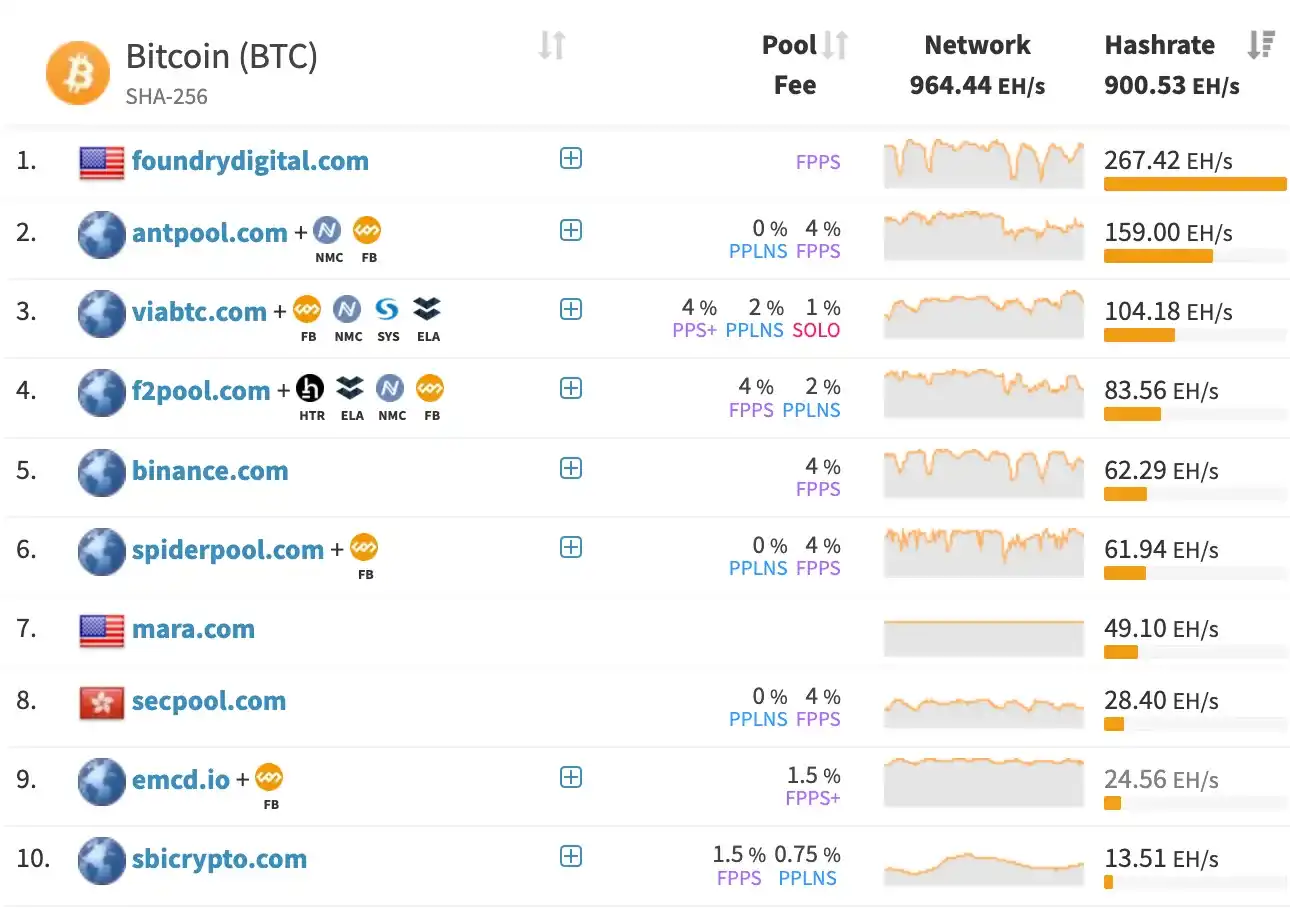Original Title: 《Bitcoin Hashrate Slides Sparks Misconceptions - AGAIN!》
Author: BlocksBridge Consulting
Translation: johyyn, BlockBeats
Editor's Note:
Recently, the overall Bitcoin hashrate has shown a significant pullback, sparking multiple speculations in the market regarding "hash collapse" and geopolitical factors, especially following the U.S. airstrikes on Iranian nuclear facilities, which have led to rampant discussions on social media. However, such judgments often overlook the probabilistic fluctuation mechanism of hashrate estimation and the impact of North American summer grid load management on mining pool operations. This article, based on difficulty adjustment models and mainstream mining pool data, combined with U.S. energy policies, Iranian compliance restrictions, and the latest legislative trends such as the "GENIUS Act," aims to clarify the true logic behind the current changes in hashrate for readers, avoiding being misled by fragmented opinions.
The following is the original content (reorganized for better readability):
Earlier this month, the seven-day moving average of Bitcoin's hashrate reached a historical high of nearly 950 EH/s, but this metric has since fallen to about 810 EH/s, a decline of approximately 15%, triggering widespread market speculation. Some voices attribute this drop to geopolitical tensions, particularly after the U.S. strikes on Iranian nuclear facilities.
Posts widely circulated on social media platform X point out that this military action coincides closely with the timing of the hashrate decline, speculating that it may lead to local Iranian miners shutting down, thereby "withdrawing" some "hidden hashrate" from the network. Meanwhile, concerns about a "hashrate collapse" have resurfaced in the market, especially against the backdrop of a brief drop in daily average hashrate to 600 EH/s.

However, such interpretations often ignore the basic principles of Bitcoin hashrate estimation, which is a common misconception that recurs with each halving cycle.
Bitcoin's hashrate is estimated based on the current network mining difficulty and block interval time, meaning that short-term data fluctuations usually stem from probabilistic deviations. In particular, daily hashrate data is extremely volatile, essentially reflecting the "luck" of miners in producing blocks rather than structural changes in the network's actual hashrate. Similarly, it is also not rigorous to assert that Bitcoin's hashrate has surpassed 1 ZH/s (zettahash) based solely on a brief spike in data for a single day.
The specific technical formula is as follows:
Hashrate (H/s) = Mining Difficulty × 2³² / Average Block Time (seconds)
Within the same difficulty cycle, the numerator of this formula remains constant, so the fluctuations in hashrate estimation are entirely driven by changes in block time.
As each market cycle progresses, new entrants often misinterpret these short-term data fluctuations. The narrative of "hashrate collapse" is a recurring phenomenon during such declines, even though Bitcoin mining is fundamentally a highly probabilistic process.
A more reasonable explanation is that the recent decline in hashrate may stem from seasonal power restrictions in North America. Pool-level data (as shown in the figure below) indicates that the most significant drop was observed in Foundry USA Pool, which experienced intermittent shutdowns before coming back online. This operational pattern aligns closely with the power restriction arrangements for mining facilities during the peak summer electricity period in the U.S. to ensure grid stability.

Source: Miningpoolstats on June 26
Even if some Iranian hashrate is affected, its impact is still limited compared to the widespread power restriction phenomenon currently affecting major U.S. mining pools. Considering compliance requirements for sanctions, it is also unlikely that Iran's large-scale hashrate would connect to U.S.-based pools like Foundry USA.
Looking ahead, the next round of Bitcoin mining difficulty adjustment is expected to occur around June 29, potentially marking the steepest decline since the implementation of China's mining ban in 2021, even exceeding the -7.32% recorded during the large-scale miner liquidation in the 2022 bear market.
However, the overall network hashrate is currently showing a gradual recovery trend. A few days ago, the estimated adjustment magnitude for this round was close to -10%, but it has now been revised to slightly below -8%. Regardless of the final adjustment magnitude, this anticipated difficulty reduction will provide some short-term relief for marginal miners, especially against the backdrop of the halving effect combined with summer power restriction pressures.
免责声明:本文章仅代表作者个人观点,不代表本平台的立场和观点。本文章仅供信息分享,不构成对任何人的任何投资建议。用户与作者之间的任何争议,与本平台无关。如网页中刊载的文章或图片涉及侵权,请提供相关的权利证明和身份证明发送邮件到support@aicoin.com,本平台相关工作人员将会进行核查。




